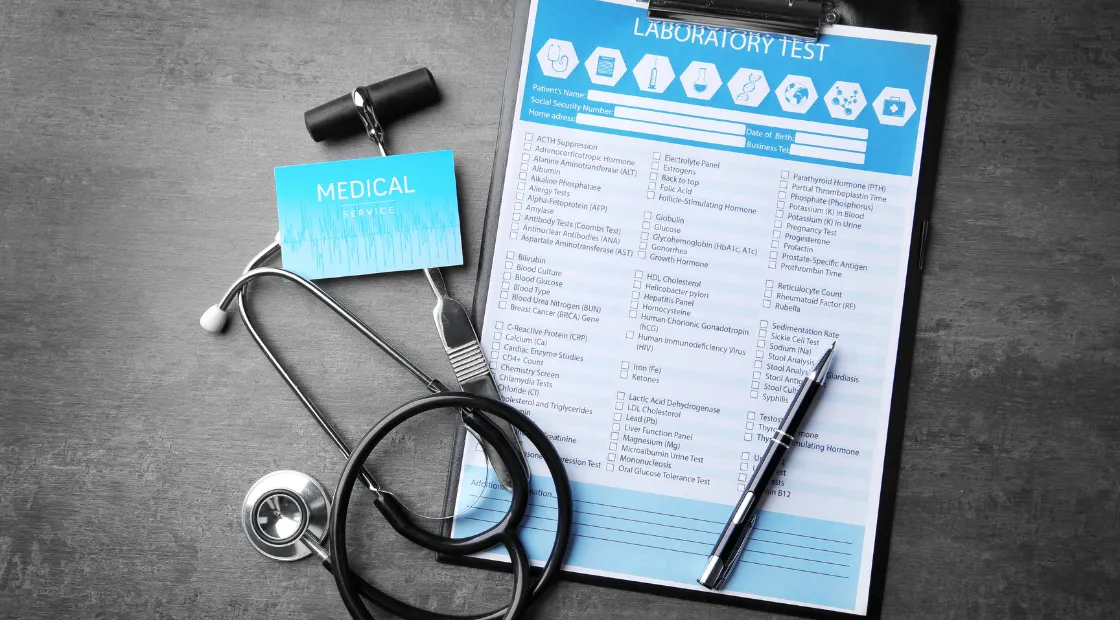How to Use Past Exams as a Strategic Study Tool

To use past exams as a strategic study tool is to unlock a treasure chest of academic insights, guiding students toward smarter, more effective preparation.
Anúncios
These relics of semesters past aren’t just dusty papers; they’re blueprints for success, revealing patterns, priorities, and pitfalls.
By dissecting old exams, students can transform their study habits, sharpen critical thinking, and approach test day with confidence.
This article explores innovative ways to leverage past exams, blending practical strategies with fresh perspectives to maximize their value.
Moreover, the insights gained from analyzing past exams can foster a deeper understanding of the subject matter, enhancing overall academic performance and encouraging lifelong learning.
Anúncios
Why Past Exams Are More Than Just Practice
Old exams are like maps of a familiar yet unpredictable terrain.
They offer a glimpse into the mind of the instructor, highlighting what’s valued in assessments.
Unlike generic study guides, past exams reflect the specific structure, style, and scope of questions you’ll face.
A 2023 study from the Journal of Educational Psychology found that students who practiced with past exams scored, on average, 12% higher than those relying solely on textbooks.
This statistic underscores the power of targeted preparation.
But how can you extract the most from these resources?
Start by treating past exams as diagnostic tools.
They reveal gaps in your knowledge and help you prioritize study topics.
For example, if a history exam consistently emphasizes essay questions on political movements, you know to deepen your analysis of those themes.
This approach shifts your focus from rote memorization to strategic understanding, saving time and boosting retention.
Additionally, using past exams encourages a proactive learning mindset, allowing students to take ownership of their education and tailor their study strategies effectively.
Decoding the Structure of Past Exams
Every exam has a rhythm, a cadence that instructors follow.
To use past exams as a strategic study tool, dissect their structure like a detective unraveling a case.
Are questions weighted equally, or do some carry more points?
Do they favor short answers or in-depth analysis?
Understanding these patterns helps you allocate study time wisely.
Consider creating a question breakdown table to visualize trends.
For instance, a biology exam might lean heavily on diagrams or problem-solving.
Mapping this out clarifies where to focus your energy.
Table 1: Sample Exam Question Breakdown
| Question Type | Frequency | Percentage of Total Points | Study Focus |
|---|---|---|---|
| Multiple Choice | 20 | 40% | Key terms, facts |
| Short Answer | 5 | 20% | Concept application |
| Essay | 2 | 40% | In-depth analysis |
This table, based on a hypothetical biology exam, shows that essays carry significant weight.
A student might then prioritize practicing long-form responses over memorizing minutiae.
This method ensures your study sessions align with the exam’s demands.
Furthermore, recognizing the structure of past exams can also help in developing effective study schedules that align with the exam's focus areas.
Timing and Pressure: Simulating Real Conditions
Why do some students ace practice questions but falter on test day?
The answer lies in pressure.
To use past exams as a strategic study tool, simulate real testing conditions.
Set a timer, eliminate distractions, and tackle the exam as if it’s the real deal.
This builds stamina and reduces anxiety.
Take Sarah, a college sophomore preparing for her calculus midterm.
She used past exams to mimic test conditions, completing them under timed constraints in a quiet room.
By her third practice session, she noticed a 15% improvement in her speed and accuracy.
This approach not only honed her skills but also built confidence, making the actual exam feel like familiar territory.
Simulating conditions also reveals time management flaws.
If you’re spending 30 minutes on a single essay question worth 10 points, you’re misallocating effort.
Adjust your pacing to mirror the exam’s structure, ensuring you don’t run out of time.
Additionally, practicing under timed conditions can help identify which types of questions take longer to answer, allowing for better strategy on exam day.
+ How to Study for Long Hours Without Getting Tired
Identifying Recurring Themes and Concepts
Instructors often recycle core concepts, even if questions vary.
To use past exams as a strategic study tool, hunt for recurring themes.
Are certain topics tested every year?
Do specific skills, like data interpretation or argumentation, appear frequently?
Spotting these patterns helps you predict what’s likely to show up.
For example, a literature student might notice that past exams for a Shakespeare course always include a question on character motivations.
By focusing on this theme, they can craft nuanced responses that impress graders.
This targeted preparation is like training for a marathon—you don’t run aimlessly; you build endurance for the specific course ahead.
Create a concept tracker to organize findings.
A simple table can highlight high-priority topics and guide your study plan.
Table 2: Concept Tracker for Past Exams
| Topic | Appears in Exams | Question Type | Study Priority |
|---|---|---|---|
| Character Motivations | 3/3 exams | Essay | High |
| Literary Devices | 2/3 exams | Short Answer | Medium |
| Historical Context | 1/3 exams | Multiple Choice | Low |
This tracker, inspired by a literature course, shows that character motivations are a safe bet for study focus.
Adjust your review to emphasize these high-yield areas.
Moreover, recognizing these recurring themes can help you develop a more comprehensive understanding of the subject, making connections between topics that enhance overall learning.

Turning Mistakes into Mastery
Errors on past exams are goldmines for growth.
To use past exams as a strategic study tool, analyze your mistakes with precision.
Don’t just mark wrong answers—dig into why you erred.
Was it a conceptual gap, a misread question, or a time crunch?
Each mistake offers a lesson.
Imagine Jake, a physics student, who consistently missed questions on thermodynamics.
By reviewing past exams, he realized he misunderstood entropy.
He revisited his notes, watched targeted tutorials, and practiced similar problems.
On the next exam, he scored 90% on thermodynamics questions.
This deliberate approach transformed a weakness into a strength.
Ask yourself: What’s holding you back from acing this exam?
Reflecting on errors fosters a growth mindset, turning setbacks into stepping stones.
Additionally, documenting these mistakes in a dedicated notebook can help track progress and ensure that similar errors are not repeated in the future.
Collaborative Learning with Past Exams
Studying alone can be isolating, but past exams can spark collaboration.
Form study groups to discuss answers, debate interpretations, and share insights.
This approach not only deepens understanding but also exposes you to diverse perspectives.
For instance, a group of nursing students might tackle past anatomy exams together, quizzing each other on diagrams and discussing clinical scenarios.
One student’s strength in skeletal systems can complement another’s expertise in musculature, creating a richer learning experience.
Collaborative analysis also mimics real-world problem-solving, where teamwork drives success.
To maximize group study, assign roles: one person explains concepts, another creates practice questions, and a third tracks time.
This structure keeps sessions focused and productive.
Furthermore, engaging in discussions about past exams can also improve communication skills and foster a sense of community among peers.
Adapting to Evolving Exam Formats
Exams evolve, reflecting changes in curriculum or teaching styles.
To use past exams as a strategic study tool, stay alert for shifts in format or content.
A course that once emphasized multiple-choice questions might now prioritize case studies.
Check with instructors or academic advisors to confirm if older exams remain relevant.
If access to recent exams is limited, platforms like university libraries or online forums (e.g., Reddit’s study communities) often share anonymized versions.
Cross-reference these with current syllabi to ensure alignment.
This adaptability keeps your preparation relevant in a dynamic academic landscape.
Additionally, staying informed about exam format changes can help you adjust your study strategies accordingly, ensuring you’re prepared for any surprises on test day.
Balancing Past Exams with Other Resources
While past exams are powerful, they’re not a standalone solution.
Integrate them with textbooks, lectures, and online resources for a holistic approach.
Think of past exams as the scaffolding of a building—essential for structure but incomplete without walls and windows.
For example, pair past exam questions with lecture notes to clarify complex topics.
If a chemistry exam highlights stoichiometry, revisit your professor’s slides or Khan Academy videos for reinforcement.
This layered approach ensures you’re not just practicing but truly understanding the material.
Moreover, utilizing a variety of resources can help reinforce learning and provide different perspectives on the same concepts, enhancing overall comprehension.
++ What to Do When You Hit a Mental Block While Studying
Building Confidence Through Familiarity
Familiarity breeds confidence.
To use past exams as a strategic study tool, revisit them multiple times to internalize their format and flow.
This repetition reduces test-day jitters, making the exam feel like a well-rehearsed performance.
Consider spacing your practice sessions over weeks rather than cramming.
Spaced repetition, a proven learning technique, enhances retention by reinforcing material at intervals.
For instance, review an exam on Monday, revisit it on Thursday, and test yourself again the following week.
This method cements knowledge and builds poise.
Additionally, familiarity with past exams can also help reduce anxiety by creating a sense of predictability and control over the testing situation.

Analogizing Exams to a Game Plan
Think of preparing with past exams like a coach strategizing for a big game.
Just as a football coach studies game tapes to predict an opponent’s plays, students can analyze past exams to anticipate question types and topics.
This analogy highlights the proactive, tactical nature of exam prep.
You’re not just studying—you’re gaming the system, using every clue to outsmart the challenge.
Moreover, this strategic mindset can foster a sense of empowerment, motivating students to take charge of their learning journey.
Overcoming Common Pitfalls
Relying solely on past exams can backfire if you fall into traps.
Avoid memorizing answers, as questions rarely repeat verbatim.
Instead, focus on understanding underlying principles.
Another pitfall is neglecting new material—past exams might not cover recent additions to the curriculum.
Balance your prep by cross-checking with current course outlines.
Additionally, don’t let overconfidence creep in.
Scoring well on practice exams doesn’t guarantee success if you skip foundational study.
Stay disciplined, blending past exams with active learning techniques like flashcards or teaching concepts to peers.
Moreover, being aware of these pitfalls can help you develop a more balanced and effective study routine that addresses all aspects of the curriculum.
Technology as an Ally
Modern tools amplify the power of past exams.
Apps like Quizlet allow you to digitize questions, creating custom quizzes for on-the-go review.
Optical character recognition (OCR) tools can convert scanned exams into searchable text, making it easier to categorize questions by topic.
Online platforms like Coursera or EdX often offer practice problems aligned with past exam formats, providing supplementary practice.
For tech-savvy students, consider using AI-driven study aids (like Grok, wink) to generate practice questions based on past exam patterns.
These tools can simulate variations of questions, keeping your prep dynamic and engaging.
Additionally, leveraging technology can facilitate collaboration among peers, allowing for shared resources and collective learning experiences.
The Long-Term Benefits
Using past exams strategically isn’t just about acing one test—it’s about building lifelong skills.
Critical analysis, time management, and pattern recognition honed through this method translate to professional settings, from analyzing data to preparing for certifications.
By mastering this approach, you’re not just passing a class; you’re training your brain to tackle complex challenges.
In conclusion, to use past exams as a strategic study tool is to embrace a proactive, insightful approach to learning.
From decoding structures to simulating pressure, each step sharpens your academic edge.
So, why not make these tools your secret weapon?
With creativity and discipline, past exams can transform your study game, paving the way for success.
Ultimately, the skills developed through this approach will serve you well beyond the classroom, equipping you for future challenges in both academic and professional endeavors.
